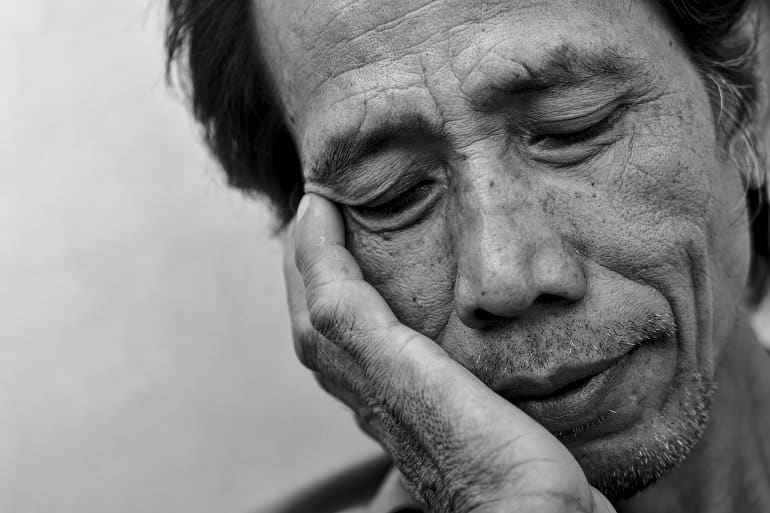Summary: How fatigued an older person feels after performing certain tasks could be an indicator of death within three years, a new study reports.
Source: University of Pittsburgh
How fatigued certain activities make an older person feel can predict the likelihood death is less than three years away, according to research published today in the Journal of Gerontology: Medical Sciences by University of Pittsburgh epidemiologists. It is the first study to establish perceived physical fatigability as an indicator of earlier mortality.
Older people who scored the highest in terms of how tired or exhausted they would feel after activities were more than twice as likely to die in the following 2.7 years compared to their counterparts who scored lower. Fatigability was assessed for a range of activities using the novel Pittsburgh Fatigability Scale.
“This is the time of year when people make—and break—New Year’s resolutions to get more physical activity,” said lead author Nancy W. Glynn, Ph.D., associate professor in the Department of Epidemiology at Pitt’s Graduate School of Public Health.
“I hope our findings provide some encouragement to stick with exercise goals. Previous research indicates that getting more physical activity can reduce a person’s fatigability. Our study is the first to link more severe physical fatigability to an earlier death. Conversely, lower scores indicate greater energy and more longevity.”
Glynn and her colleagues administered the Pittsburgh Fatigability Scale to 2,906 participants aged 60 or older in the Long Life Family Study, an international study that follows family members across two generations. Participants ranked from 0 to 5 how tired they thought or imagined that certain activities—such as a leisurely 30-minute walk, light housework or heavy gardening—would make them.
Follow-up for this work concluded at the end of 2019, to avoid any increased mortality impact from the COVID-19 pandemic, which gave the team an average of 2.7 years of data on each participant. After accounting for a variety of factors that influence mortality, such as depression, pre-existing or underlying terminal illness, age and gender, the team found that participants who scored 25 points or higher on the Pittsburgh Fatigability Scale were 2.3 times more likely to die in the 2.7 years after completing the scale, compared to their counterparts who scored below 25.
“There has been research showing that people who increase their physical activity can decrease their fatigability score,” said Glynn, a physical activity epidemiologist. “And one of the best ways to increase physical activity—which simply means moving more—is by setting manageable goals and starting a routine, like a regular walk or scheduled exercise.”
Beyond tying high fatigability to an earlier death, Glynn said the study demonstrates the value of the Pittsburgh Fatigability Scale, which she and colleagues created in 2014. It has since been translated into 11 languages.

“While the Pittsburgh Fatigability Scale has been widely adopted in research as a reliable, sensitive way to measure fatigability, it is underutilized in hospital settings and clinical trials,” Glynn said.
“My ultimate goal is to develop a physical activity intervention targeting a reduction in fatigability as a means to stem the downward spiral of impaired physical function common with the aging process. By reducing fatigability, one can change how they feel, potentially motivating them to do more.”
Additional authors on this research are Theresa Gmelin, M.S.W., M.P.H., Yujia (Susanna) Qiao, Sc.M., Robert M. Boudreau, Ph.D., Kaare Christensen, M.D., and Anne B. Newman, M.D., all of Pitt; Sharon Renner, Ph.D., of Columbus State University; Mary F. Feitosa, Ph.D., of Washington University in St. Louis; Stephanie Cosentino, Ph.D., of Columbia University, and Stacy L. Andersen, Ph.D., of Boston University.
This research was supported by the National Institutes of Health’s National Institute on Aging grants U01 AG023712, U01 AG023744, U01 AG023746, U01 AG023749, U01 AG023755, P01 AG08761, U19 AG063893, T32 AG000181 and K01 AG0057798.
About this aging research news
Author: Allison Hydzik
Source: University of Pittsburgh
Contact: Allison Hydzik – University of Pittsburgh
Image: The image is in the public domain
Original Research: Open access.
“Perceived Physical Fatigability Predicts All-Cause Mortality in Older Adults” by Nancy W. Glynn et al. Journal of Gerontology
Abstract
Perceived Physical Fatigability Predicts All-Cause Mortality in Older Adults
Background
Perceived physical fatigability is highly prevalent in older adults and associated with mobility decline and other health consequences. We examined the prognostic value of perceived physical fatigability as an independent predictor of risk of death among older adults.
Methods
Participants (N = 2 906), mean age 73.5 [SD, 10.4] years, 54.2% women, 99.7% white enrolled in the Long Life Family Study, were assessed at Visit 2 (2014–2017) with 2.7 [SD, 1.0] years follow-up. The Pittsburgh Fatigability Scale (PFS), a 10-item, self-administered validated questionnaire (score range 0–50, higher = greater fatigability) measured perceived physical fatigability at Visit 2. Deaths post-Visit 2 through December 31, 2019 were identified by family members notifying field centers, reporting during another family member’s annual phone follow-up, an obituary, or Civil Registration System (Denmark). We censored all other participants at their last contact. Cox proportional hazard models predicted mortality by fatigability severity, adjusted for family relatedness and other covariates.
Results
Age-adjusted PFS Physical scores were higher for those who died (19.1 [SE, 0.8]) compared with alive (12.2, [SE, 0.4]) overall, as well as across age strata (p < .001), except for those 60–69 years (p = .79). Participants with the most severe fatigability (PFS Physical scores ≥ 25) were over twice as likely to die (hazard ratio, 2.33 [95% CI, 1.65–3.28]) compared with those who had less severe fatigability (PFS Physical scores < 25) after adjustment.
Conclusions
Our work underscores the utility of the PFS as a novel patient-reported prognostic indicator of phenotypic aging that captures both overt and underlying disease burden that predicts death.






